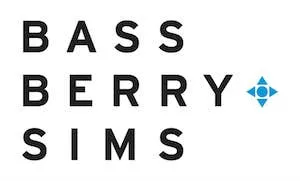On November 17, 2020, the Securities and Exchange Commission (SEC) adopted rules (which are now effective) permitting electronic signatures for SEC filings, provided that certain procedures are followed. There are potential advantages to the utilization of e-signatures by public companies in SEC filings, including from a facilitation perspective (particularly for filings such as registration statements and 10-Ks which need to be signed by a significant number of individuals) and a record-keeping perspective.
Overview of E-Signature Rules
Before the adoption of the SEC's e-signature rules which recently became effective, SEC filings needed to be manually signed by the signatories to such filings, and public companies were required to retain such manual signatures for a period of at least five years (and provide such signatures to the SEC upon request). The amendments to Regulation S-T resulting from these new rules allow for e-signatures instead of manual signatures (manual signatures will continue to be permitted as well) for SEC filings, provided that the following conditions are met:
- The signatory must present a physical, logical, or digital credential that authenticates the signatory's identity (this may involve a driver's license, passcode or a credential chip on a workplace ID).
- The signature process must provide for non-repudiation, which is defined as "assurance that an individual cannot falsely deny having performing a particular action" (this may involve public-key encryption tools provided by commercially available e-signature platforms).
- The e-signature must be attached, affixed, or otherwise logically associated with the signature page or document being signed.
- There must be a timestamp to record the date and time of the signature.
Before an electronic signature may be used for any individual, that individual must manually sign a document in which such individual agrees to the use of electronic signatures for SEC filings (this manually signed document must be retained for at least seven years after the most recently signed document electronically signed by such individual).
Electronic signatures will be allowed for a wide array of filings, including registration statements, Form 8-Ks, Form 10-Qs, Form 10-Ks, Section 302/906 certifications to periodic reports, Section 13 filings and Section 16 filings. Whether or not a signature is obtained manually or electronically, the rules continue to require the document be signed before or at the time the filing is made, and that the signature be retained by the public company for five years (and be provided to the SEC upon request).
Next Steps
Assuming that a public company would like to utilize e-signatures for SEC filings, a key question is the method by which the public company would obtain e-signatures in accordance with the rules, which may involve the use of a commercially available e-signature platform or could potentially be facilitated through the internal IT system of the public company. In this regard, certain leading commercially available e-signature platforms already have programs in place which satisfy all of the SEC's e-signature requirements. This may be an attractive alternative, particularly for public companies (and/or their directors and officers) that have experience utilizing one of these programs. If a public company desires to utilize this alternative, then the public company will also want to confirm that the commercially available e-signature platform has a storage mechanism in place to allow the e-signatures of all company signatories to be accessible by the company.
From an internal IT system perspective, simply sending an email on a public company's internal email platform affirming an individual's desire to have his or her conformed signature included in a filing may not satisfy all of the requirements of the SEC rules (i.e., the authentication and nonrepudiation requirements), assuming that the public company does not already have additional IT procedures in place. In this regard, while most public companies likely have the means to implement procedures in their internal IT systems that would satisfy each of the requirements of the rules if desired, such means may not currently be in place. If this is an option that a public company would like to consider, it would be advisable to interface with the public company's IT department regarding the desirability and practicability of utilizing the internal IT system of the public company to comply with the SEC's e-signature requirement, and to consider the benefits and costs of this approach compared to utilizing a commercial e-signature platform.
Assuming that the public company would like to utilize e-signatures, all directors and officers who will be electronically signing filings will need to manually sign a document allowing for the utilization of e-signatures for any such individual on a going-forward basis. This e-signature authorization form would also need to be signed by new directors and officers on a going-forward basis, which presumably could be done at the time of their onboarding process. In addition, assuming that a public company plans to utilize electronic signatures for Section 16 and other SEC filings for which a power of attorney is being utilized, the public company would want the recipient(s) of the power of attorney (e.g., the signatory of the Section 16 filings) to sign an e-signature authorization form as well.
If you have any questions regarding any of the topics covered in this blog post, please feel free to email the author directly or, if applicable, contact your primary Bass, Berry & Sims relationship attorney.
The content of this article is intended to provide a general guide to the subject matter. Specialist advice should be sought about your specific circumstances.

